Nvidia has expanded its GeForce RTX 20 Series by adding three new cards to the lineup, which are RTX 2060 Super, RTX 2070 Super, and RTX 2080 Super. These RTX Super series cards offer more performance than their regular counterparts (non-Super ones), and that too at the same price. The only exception here is the RTX 2060 Super, which is slightly more expensive than its non-Super model. This desperate move by Nvidia to launch the RTX super series so quickly is to combat the Radeon RX 5700 and Radeon RX 5700 XT, which are the main rivals of the non-super RTX 2060 and RTX 2070.
The RTX Super series cards use the same Turing GPU architecture and are built on the 12nm manufacturing process. These cards have the suffix ‘Super’ to their names, which is similar to the ‘Ti’ suffix that Nvidia has been using for their more powerful variants of the cards. These Super series cards support Real-Time Ray Tracing and DLSS because they do have RT cores and Tensor cores in them, just like their non-Super counterparts. To learn more about these cards and how they will perform in games, here I am going to list down the specifications of these RTX Super series cards along with my opinions about them.
What is New in RTX Super Cards?
RTX Super series graphics cards come with significantly more CUDA Cores and higher GPU clock speeds than their regular counterparts. Also, they do have slightly more RT Cores and Tensor Cores too in them. The memory speed, amount, and interface remain the same for most of the cards with the exception being RTX 2060 Super which has got an extra 2GB VRAM and a higher interface of 256-bit. The difference in the number of CUDA Cores between RTX 2060 Super & RTX 2060, and RTX 2070 Super & RTX 2070 is 256 CUDA Cores, whereas, in the RTX 2080 Super and RTX 2080, it is only 128 CUDA Cores, which is not so significant. RTX Super series cards come with pretty higher GPU Clock speeds, both for Base and Boost. The difference in the GPU clock speed (both Base & Boost) for Super and non-Super series RTX cards is of 100MHz on average.
Now, setting differences aside, the great thing about the RTX Super series cards is that they are priced the same as the non-Super counterparts, except for RTX 2060 Super, which is about $50 premium over the RTX 2060, mainly because of its extra 2GB VRAM. When it comes to features, then both RTX Super and non-Super series cards come with the same features that include support for Real-Time Ray Tracing, DLSS (Deep Learning Super Sampling), DirectX 12, OpenGL 4.5, Vulkan, Nvidia Ansel, GPU Boost, Nvidia G-Sync, New NVENC Encoder, and are VR Ready graphics cards. Only RTX 2080 Super and RTX 2070 Super support SLI and USB Type-C connector for VirtualLink for hooking up next-generation Virtual Reality Headsets for an immersive Virtual Reality Gaming experience.
| RTX Graphics Cards | GPU Chip | CUDA Cores | RT Cores / Tensor Cores | GPU Clock | Memory | Memory Speed | Price (MSRP) |
| RTX 2080 Super | TU104 | 3072 | 48 / 384 | 1650 / 1815 MHz | 8GB GDDR6 (256-bit) | 15.5 Gbps | $699 |
| RTX 2080 | TU104 | 2944 | 46 / 368 | 1515 / 1710 MHz | 8GB GDDR6 (256-bit) | 14 Gbps | $699 |
| RTX 2070 Super | TU104 | 2560 | 40 / 320 | 1605 / 1770 MHz | 8GB GDDR6 (256-bit) | 14 Gbps | $499 |
| RTX 2070 | TU106 | 2304 | 36 / 288 | 1410 / 1620 MHz | 8GB GDDR6 (256-bit) | 14 Gbps | $499 |
| RTX 2060 Super | TU106 | 2176 | 34 / 272 | 1470 / 1650 MHz | 8GB GDDR6 (256-bit) | 14 Gbps | $399 |
| RTX 2060 | TU106 | 1920 | 30 / 240 | 1365 / 1680 MHz | 6GB GDDR6 (192-bit) | 14 Gbps | $349 |
GeForce RTX 2080 Super
RTX 2080 Super is now the second most powerful card in the RTX 20 series, replacing the RTX 2080. The GPU chip used here is TU104 and the card comes with 3072 CUDA Cores and 8GB GDDR6 memory. It has 128 CUDA Cores more than the regular RTX 2080 and also has a higher GPU and Memory clock speed. Also, it does get some extra RT Cores and Tensor Cores that can result in slightly higher performance in Real-Time Ray Tracing and DLSS in supported games. The card does support SLI, but it does consume a little more power at 250W, compared to the 225W in RTX 2080. For power, it does require one 8-pin and 6-pin PCIe power connector and the PSU requirement is 650W. It is priced at $699 MSRP, the same as RTX 2080.
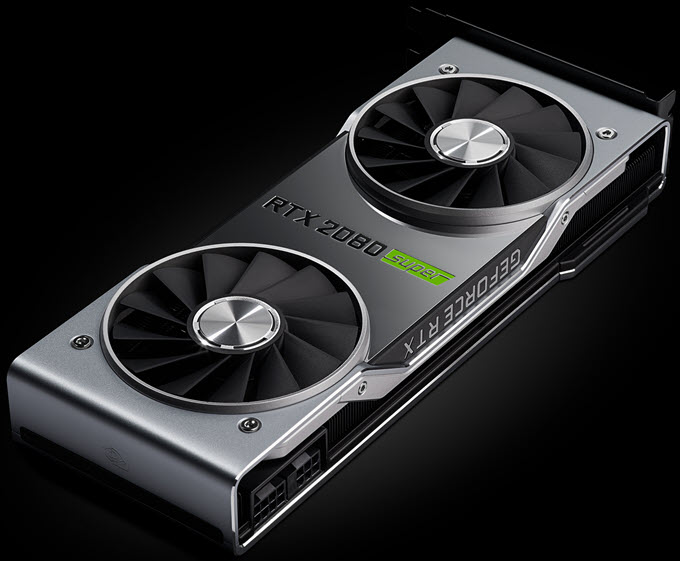
| GeForce RTX 2080 Super Specifications | |
| GPU Chip | TU104 |
| CUDA Cores | 3072 |
| GPU Clock | 1650 / 1815 MHz |
| Memory Size | 8GB GDDR6 |
| Memory Interface | 256-bit |
| Memory Speed | 15.5 Gbps |
| Memory Bandwidth | 496 GB/s |
| Bus Interface | PCI Express 3.0 |
| Real Time Ray Tracing | Yes |
| RTX-OPS Performance | 63 T |
| Ray Tracing Performance | 8 Giga Rays/s |
| NVIDIA NVLink (SLI-Ready) | Yes |
| VR Ready | Yes |
| PCI-E Power Connectors | 6-Pin + 8-Pin |
| Power Consumption | 250W |
| Recommended PSU | 650W |
GeForce RTX 2070 Super
RTX 2070 Super finds its position below the RTX 2080 and above the RTX 2070. The card has got the same TU104 Chip that is used in the RTX 2080, but it has been slightly cut down. The card comes with 2560 CUDA Cores, which is 256 more than in the RTX 2070, and has got the same memory configuration, which is 8GB GDDR6 with 256-bit wide bus. The RTX 2070 Super also comes with higher GPU clock speeds, more RT & Tensor Cores, and includes the support for SLI, which the regular RTX 2070 lacks. However, when it comes to power consumption, then RTX 2070 Super does consume more power at 215W, compared to the 185W of RTX 2070. Also, the PSU requirement for RTX 2070 Super is on the higher side, which is 650W, while the RTX 2070 only needs 550W PSU. RTX 2070 Super requires one 8-pin and 6-pin PCIe power connector, while there is only an 8-pin PCIe power connector needed to power RTX 2070. The card is priced at $499 MSRP, the same as RTX 2070.
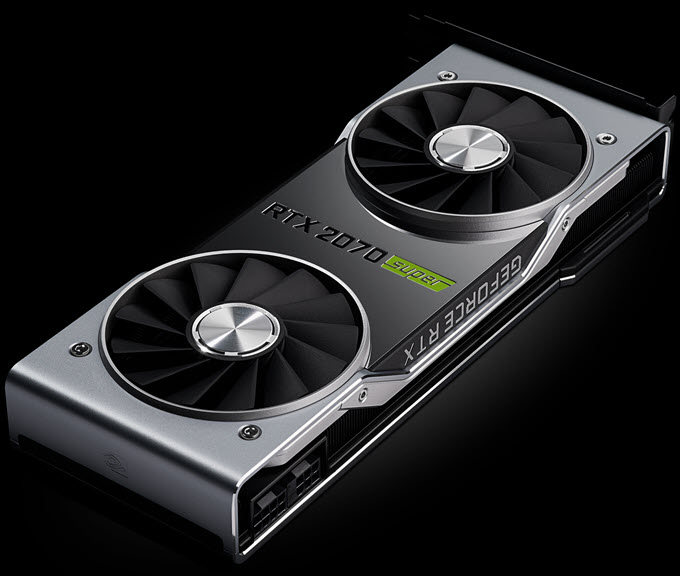
| GeForce RTX 2070 Super Specifications | |
| GPU Chip | TU104 |
| CUDA Cores | 2560 |
| GPU Clock | 1605 / 1770 MHz |
| Memory Size | 8GB GDDR6 |
| Memory Interface | 256-bit |
| Memory Speed | 14 Gbps |
| Memory Bandwidth | 448 GB/s |
| Bus Interface | PCI Express 3.0 |
| Real Time Ray Tracing | Yes |
| RTX-OPS Performance | 52 T |
| Ray Tracing Performance | 7 Giga Rays/s |
| NVIDIA NVLink (SLI-Ready) | Yes |
| VR Ready | Yes |
| PCI-E Power Connectors | 6-Pin + 8-Pin |
| Power Consumption | 215W |
| Recommended PSU | 650W |
GeForce RTX 2060 Super
RTX 2060 Super is the only card here that offers a bit more compared to other RTX Super cards over its non-Super variant. This is because in spite of having more CUDA Cores, RT Cores and Tensor Cores over the non-Super RTX 2060, it also offers an extra 2GB VRAM and increased memory interface of 256-bit, which then ultimately results in higher memory bandwidth. The card comes with 2176 CUDA Cores, 256 more than the non-Super one, and has got 8GB GDDR6 memory having a 256-bit interface. The GPU chip used here is TU106, the same used in the RTX 2070 and RTX 2060. The power consumption of this card is slightly on the higher side at 175W, compared to 160W in RTX 2060, and it requires a 550W for its working. For power, it requires only an 8-pin PCIe power connector, which RTX 2060 also requires. RTX 2060 Super costs $50 more than its non-super variant, and you can get it at $349 MSRP.
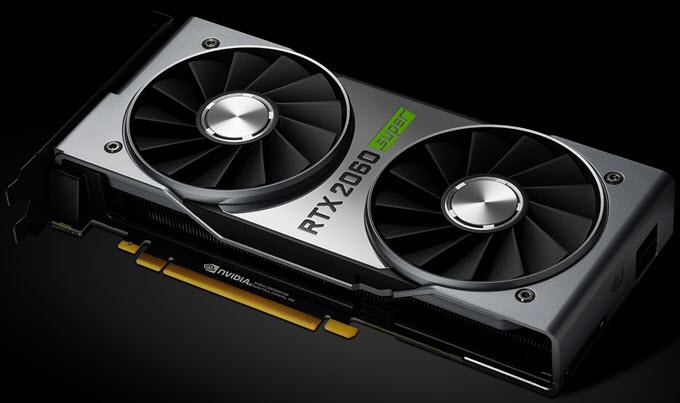
| GeForce RTX 2060 Super Specifications | |
| GPU Chip | TU106 |
| CUDA Cores | 2176 |
| GPU Clock | 1470 / 1650 MHz |
| Memory Size | 8GB GDDR6 |
| Memory Interface | 256-bit |
| Memory Speed | 14 Gbps |
| Memory Bandwidth | 448 GB/s |
| Bus Interface | PCI Express 3.0 |
| Real Time Ray Tracing | Yes |
| RTX-OPS Performance | 41 T |
| Ray Tracing Performance | 6 Giga Rays/s |
| NVIDIA NVLink (SLI-Ready) | No |
| VR Ready | Yes |
| PCI-E Power Connectors | 8-Pin |
| Power Consumption | 175W |
| Recommended PSU | 550W |
RTX Super Cards Performance
The below mentioned benchmarks will give you an idea about the gaming performance of the new RTX 2060 Super, RTX 2070 Super, and RTX 2080 Super graphics cards.
RTX 2070 Super & RTX 2060 Super Performance
Here are the benchmarks of RTX 2060 Super and RTX 2070 Super graphics cards in some of the most popular AAA titles at 1440p resolution.

From the above benchmarks, you can clearly see that RTX 2070 Super performs similar to RTX 2080, and the RTX 2060 Super matches RTX 2070 level of performance.
RTX 2080 Super Performance

RTX Super Ray Tracing Performance
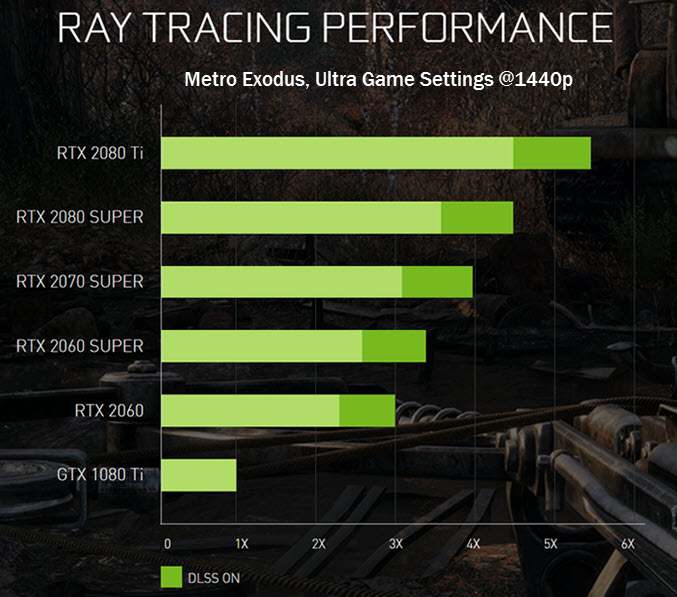
What RTX Super series cards really are?
To be honest, these RTX Super series cards are not entirely new at all. In fact, it is just old wine in a new bottle. If I have to say it clearly, then RTX 2060 Super is almost an RTX 2070, and RTX 2070 Super is almost an RTX 2080 with the same price tag. On the other hand, RTX 2080 Super is just a slightly beefed-up version of RTX 2080 with slightly more cores and higher memory speed. The gaming performance figures of these cards tell the same story too.
See also:
- RTX 2070 SUPER vs RX 5700XT vs RTX 2080 vs RTX 2070 Comparison
- RTX 2060 SUPER vs RX 5700 vs RX 5700 XT vs RTX 2070 vs RTX 2060 Comparison
Final Thoughts
The introduction of the RTX Super series has created some sort of confusion in the minds of gamers because the gap between the adjacent cards is very minimal and you can get confused about which card to choose for your next gaming build. Also, I really feel bad for the customers who have already purchased RTX 2060, RTX 2070 and RTX 2080 cards a while back, because now these Super series variants of these cards offer better performance at the same price, and honestly they do feel cheated by the Nvidia on a serious note. However, it seems like Nvidia is going to discontinue the non-Super RTX cards (except RTX 2060), and will go on with these RTX Super cards in the future. So, if you are looking to buy your new RTX 20 series card for your gaming PC, then it is better to go with the Super one only unless you get a great deal on a non-Super RTX card.
(*This post may contain affiliate links, which means I may receive a small commission if you choose to purchase through the links I provide (at no extra cost to you). Thank you for supporting the work I put into this site!)
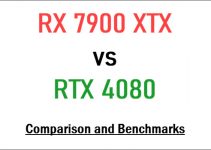
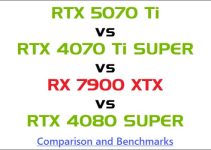
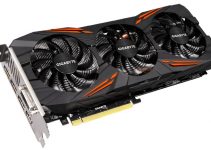
Hi Akshat
The rtx 2070 super is on sale and priced very similarly to a rtx 2060 super right now in Taiwan. However i have a 600w thermaltake psu. Would it be unadvisable to go with the 2070 super model?
I think you should o with the RTX 2060 SUPER only with your current PSU.
Hello again,
Out of the the choices between the rtx 2060 super, rx 5700, and rx 5700 xt, which one has the best performance for someone that is limited to a 600 Watt psu? I want a 8gb card to have the most longevity since i don’t upgrade that often. I like the performance of the 5700 xt, but is it me that its video ram can get really hot? I want a card that can last for the long haul too.
Thanks again!
Well, to be on the safer side, I suggest RTX 2060 SUPER. It delivers great performance, will have no issues with 600W and Nvidia always has better drivers.
Hi Akshat,
I really appreciate your expert advice. I think the 1660 super will be my choice then. I am upgrading from a GeForce GTA 620. 😉
Oops, i meant the rtx 2060 super… 🙂
Great!